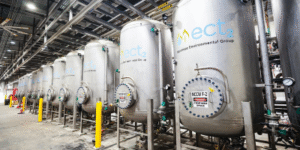Infrastructure projects demand meticulous planning and execution. Level best precision grading plays a crucial role in this process. It ensures that every inch of land is prepared accurately for construction. This method uses advanced technology to achieve the highest standards of accuracy. Without it, even the most well-planned projects can face setbacks. Let’s explore why this technique is so vital.
Understanding Level Best Precision Grading
Level best precision grading refers to the use of cutting-edge tools and techniques to prepare land surfaces. These methods ensure that the terrain is perfectly levelled before construction begins. The process involves using GPS systems, laser levels, and other high-tech equipment. Together, they create a flawless surface that meets project specifications. By achieving such accuracy, engineers can avoid costly mistakes down the line. This approach saves time and resources while improving overall quality.
The Role of Precision in Infrastructure Projects
Precision is not just a buzzword in infrastructure development; it is a necessity. Every step of the process requires exact measurements and calculations. Level best precision grading ensures that the groundwork is solid and reliable. This is especially important for large-scale projects like highways or airports. A single error in grading can lead to drainage issues, structural failures, or safety hazards. By focusing on accuracy from the start, these risks are minimized significantly.
Level Best Precision Grading Achieve Accuracy with Modern Technology
Modern technology has revolutionized the way we approach grading. Tools like GPS-guided machinery and 3D modelling software have transformed the field. These innovations allow for precise measurements and adjustments in real-time. With Level best precision grading, contractors can visualize the final outcome before starting work. This foresight helps them anticipate challenges and plan accordingly. As a result, projects are completed more efficiently and with fewer errors.
Enhancing Project Efficiency
Efficiency is key to successful infrastructure projects. Level best precision grading streamlines the entire process by reducing manual labor. Automated systems handle complex tasks with ease, ensuring consistent results. This reduces the chances of human error and speeds up construction timelines. Moreover, accurate grading minimizes the need for rework, saving both time and money. In today’s fast-paced world, these advantages are invaluable.
Improving Safety Standards
Safety should always be a top priority in any construction project. Level best precision grading enhances safety by creating stable and predictable surfaces. Properly graded land prevents accidents caused by uneven terrain. It also ensures that structures are built on a solid foundation, reducing the risk of collapse. Additionally, accurate grading improves water management, preventing flooding and erosion. All these factors contribute to safer working conditions for everyone involved.
Cost Savings Through Accurate Grading
Cost overruns are a common concern in infrastructure projects. Level best precision grading helps mitigate this issue by reducing unnecessary expenses. By achieving precise measurements from the outset, contractors avoid costly mistakes. They also minimize material waste, as every resource is used optimally. Furthermore, accurate grading reduces the need for repairs or modifications later on. These savings add up significantly, making precision grading a wise investment for any project.
Conclusion
Level best precision grading is indispensable for infrastructure projects. It combines advanced technology with meticulous planning to deliver flawless results. From enhancing safety to reducing costs, its benefits are numerous and far-reaching. As the world continues to develop at an unprecedented pace, the importance of precision grading will only grow. By embracing these techniques, we can build stronger, safer, and more sustainable structures for future generations.





